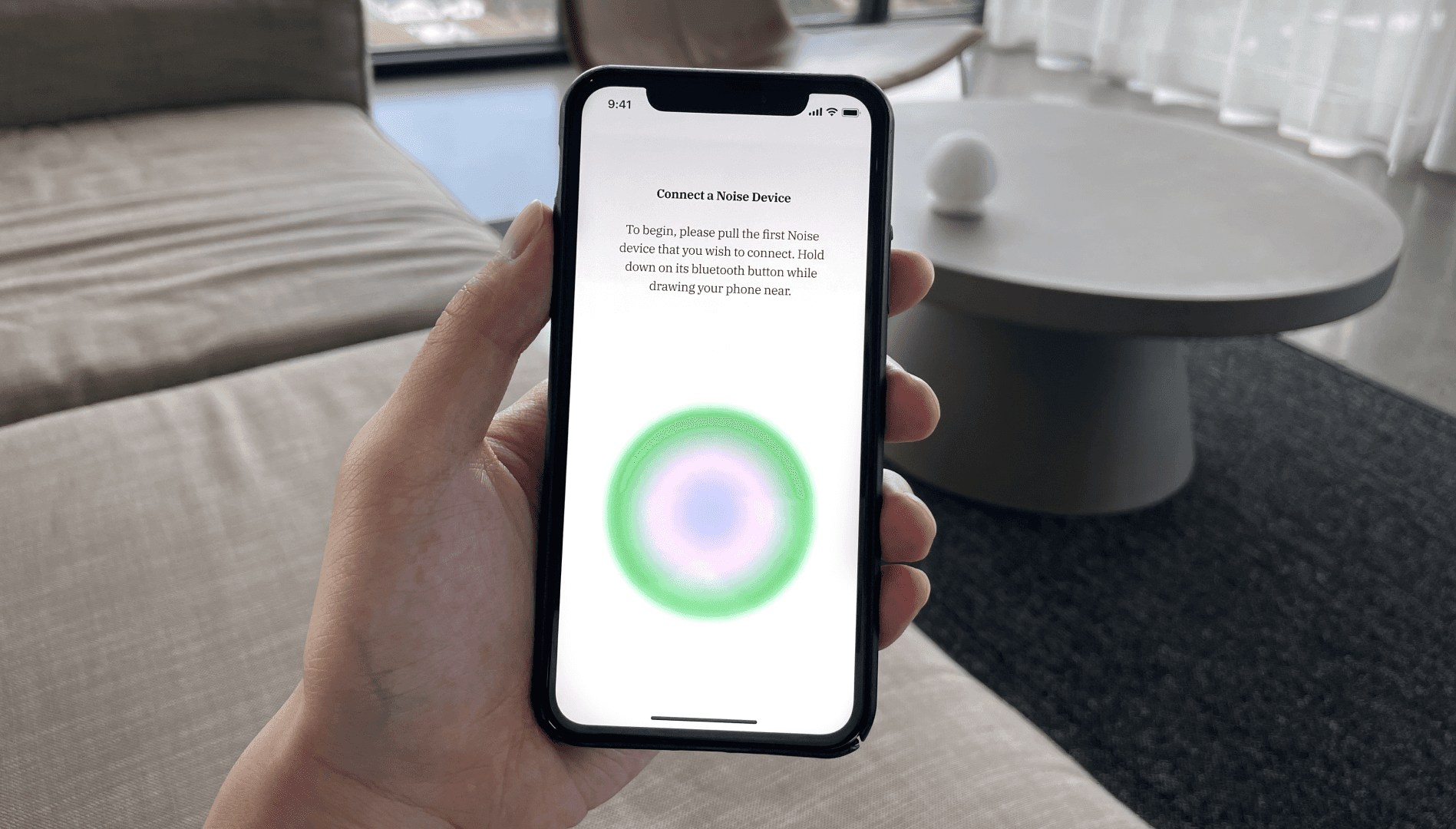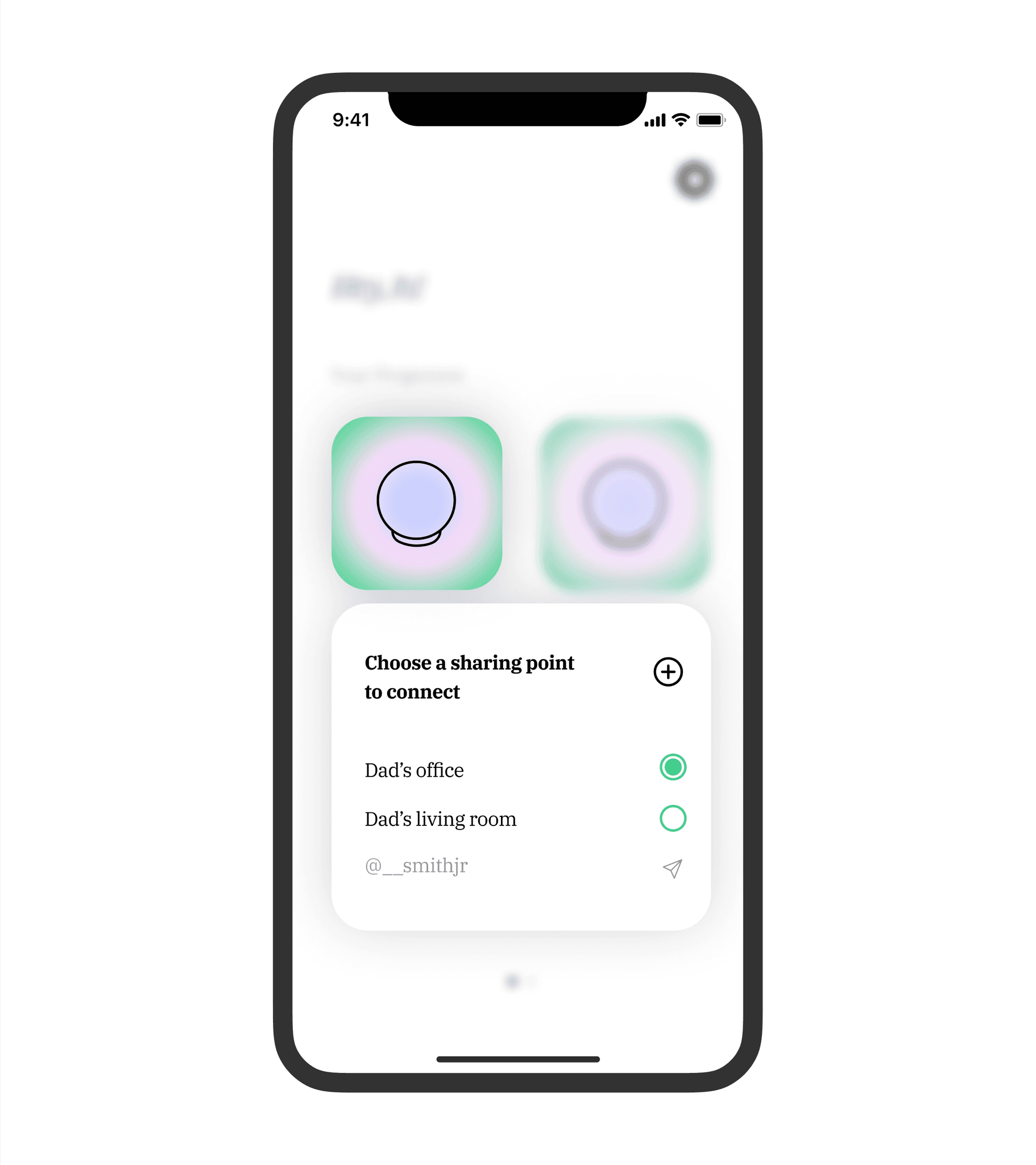Noise
Overview
We were tasked to create a system of IoT devices that improve the well-being of individuals at home.
For this project, I worked with a team to identify opportunity areas by holding in-depth-interviews with teens who grew up in split family households. We focused on ideating concepts that were discursive and speculative in nature. I contributed significantly to the design research and interface design steps.
My Role
UX Research, Interface Design, App/Video Prototyping
Timeline
3 weeks, 2021
Team
Jasper Xie, Joanne Chen, Gwenna Gram
The Problem
As a team, we were drawn to the space of children and teens from split-family households. This problem space is also relevant to friends who are living in different cities from one another or a doctor working night-shifts away from their family.
Design Principles
Based on our findings from our in-depth-interviews, we formed 4 design principles that summarized the user needs. These guiding principles set us up for our ideation process where we brainstorm concepts that encompass these values.
Early Ideation
As a team, we ideated concepts that ideated concepts that were imaginative and futuristic. The process of sketching to communicate our ideas allowed us to mix-and-match concepts as a way of refining our ideas. By not initially focusing on practicality or feasibility, we were able to consider alternative forms for fostering human connection.
System design
I led the effort to work through the mental mind map for the device ecosystem. There are multiple devices in different households that all need to connect. By creating visual mind maps, we were able to storyboard how each household would set-up their devices.
Preventing unwarranted surveillance
Our main challenge was to create a system of devices that did not allow unwarranted surveillance. In the scenario of split family households, the child and individual parent may only want to view each others' presence. As a result, we designed multiple iterations of how we might visually represent someone's motion while still concealing their identity.
Motion detection using Wi-Fi network
Part of this assignment was to imagine the future possibilities of IoT devices. We brainstormed ways motion could be detected across spaces. Rather than having multiple motion detectors places in each room, the choice to use a household's existing Wi-Fi network helped us consider what may be possible in the future.

Concept
Noise allows you to immerse yourself in the visual white noise made from the motions of far-away family and friends. Later, when you have time to connect in real-time in person or on the phone, talk about what you discovered.

1 - Sharing Point
Each home has one motion detector that picks up motion data across the span of their Wi-Fi range.
2 - Projector
Households can have as many projectors as they would like — each can be connected to varying sharing points.
3 - Noise App
Each projector owner has a paired app, with which they can request to connect to sharing points, and personalize their experience.
Design Considerations
Abstraction of motion for privacy
The visual design of gradient blurred circles are an abstracted representation of someone's motion being detected. This abstraction lacks accuracy and precision which is intended to prevent unwarranted surveillance of someone in another household.
Gestures
To turn on the projection, the user can tap the device. For more customization, they can rotate to adjust the position and pinch to resize the light emitted.



Granting access to specific households
Speculative approach to adjusting data capture areas
Making it transparent who has access
Takeaways
Establish a device ecosystem early
As we started to wireframe the app screens, we realized how difficult it was to discuss user flows without having set names for each component of our system. By creating that mental mind map of the locations of each device, it became clearer the relationships between devices, users, and households.
Leverage visual diagrams and sketches
We spent days trying to figure out a simple and intuitive mind map of a network of devices across multiple households. We created image collages and diagrams to visualize ideas during our remote team meetings.
Embrace impractical ideas
As a team we ideated over 60 concepts in forms of sketches. Nearly every initial idea was impractical and unfeasible for the present day. By letting our imagination run wild, we were able to consider new possibilities technology could play in our everyday routines.
Next Steps
User testing and iteration
Test with different households
Refine motion design
Extension of Devices
Phone Screen, Apple Watch










